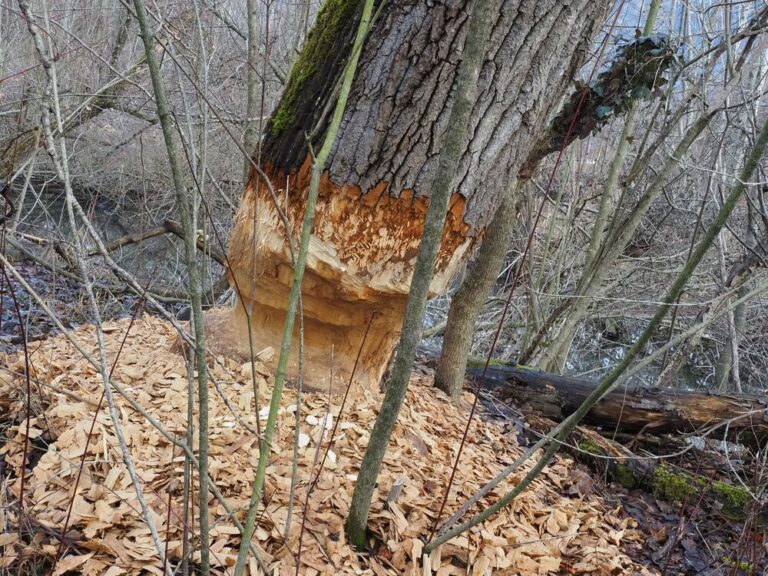Mammals of the Rhine Gorge

Beaver
Mature beavers become up to 1 m long and weigh between 20 and 25 kg. In May 2 to 3 young animals are born and spend the first weeks well protected in their den. Very early, they begin to splash around in the water. However, they are not able to dive yet as they are too light and float like cork.
By no means all beavers build their classical beaver lodge. Often they dig branched dens in the bankside. The entrance of a beaver lodge is always under water and the housing always higher than the water level. Beavers are very social animals and constantly tinker on their caves to make it snuggly and cozy. With branches and mud, the wholes plugged and the den lagged.

During summer beavers feed primarily from herbaceous plants like grasses, reed or leaves. In winter, bark is the main food for the beavers. In fall, it therefore begins to fell thicker trees. The beaver’s «felling sites» are often upstream. This allows them to take advantage of the drift when transporting the thick branches. Such «felling sites» can be found in several places in the Rhine Gorge.
Source: Biberfachstelle
Terraviva
Referenzen.
Einen Einblick über das Tun und Wirken von Terraviva vermitteln Ihnen die aktuellen und abgeschlossenen Projekte.
Terraviva
Referenzen.
Einen Einblick über das Tun und Wirken von Terraviva vermitteln Ihnen die aktuellen und abgeschlossenen Projekte.
Lynx
The elusive, nocturnal lynxes are generally not seen and are no danger to humans. Lynx are solitary animals and do not tolerate other adult animals of the same sex in their territory. In a protected place, the lynx gives birth to one to four cubs at the end of May, beginning of June. The cubs stay with their mother until the next litter.
Wolf
At night, wolves wander far and wide in their territory, often through the Rhine Gorge. However, the chance of meeting a wolf is very low. This is because they are very elusive and generally avoid contact with humans. Wolves have highly developed social behavior. Animals from different generations usually live in a pack and all help to raise the pups.







